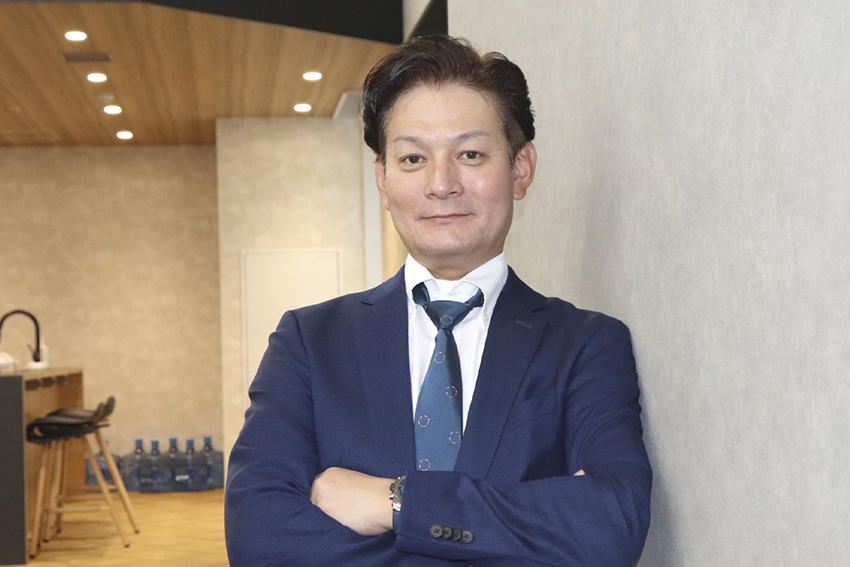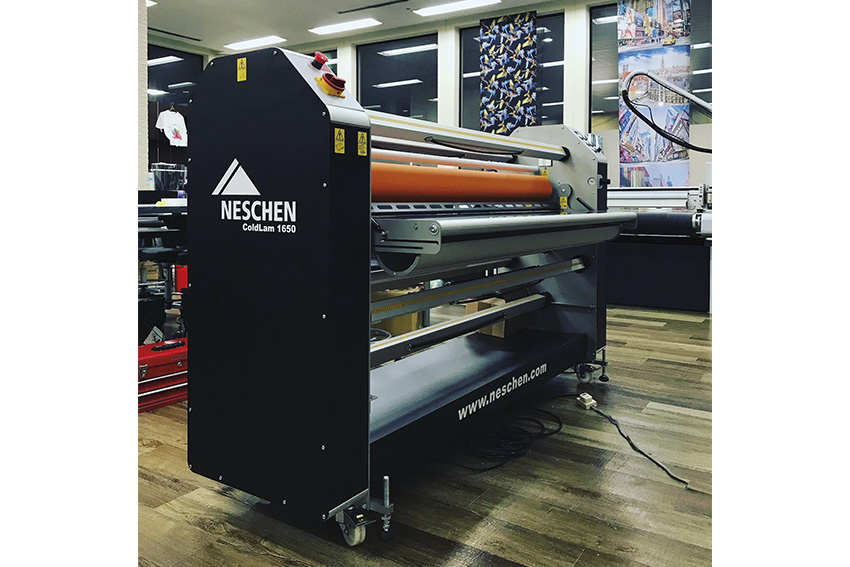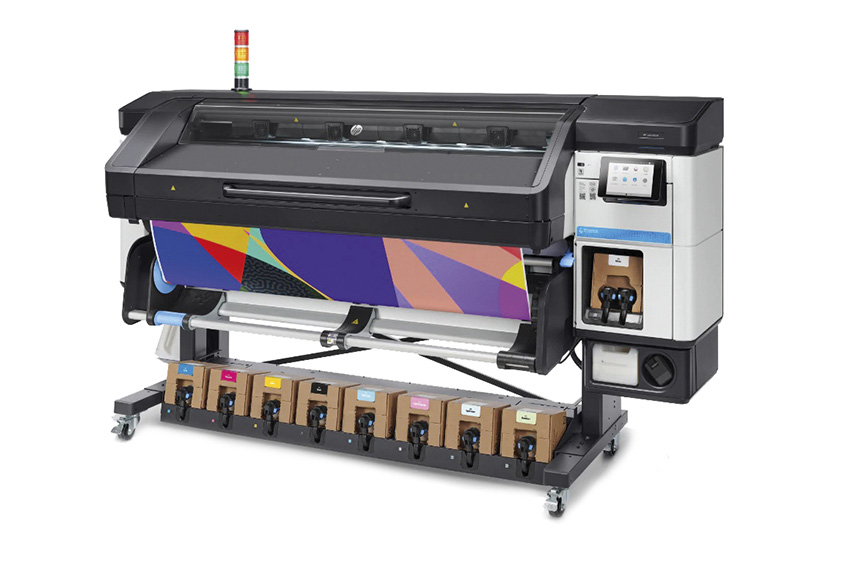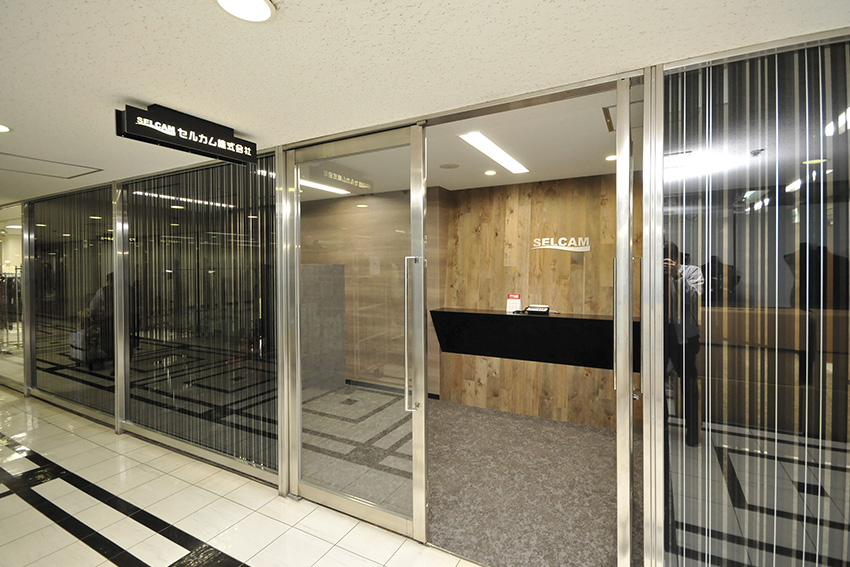Founded in 1988 as a software vendor, Japanese printing company, SELCAM, has become one of the leading suppliers of printing solutions in Japan, ranging from 3D printers to laminators.

Over the last 25-30 years Japan has seen the rise of regional competitors from countries like Korea, China, and Taiwan, who have followed the Japanese model of success but done so at a cheaper labor cost, thus pushing Japan out of certain markets, but we still know that Japan is a leader when it comes to niche, B2B fields. How have Japanese firms been able to maintain their leadership despite the stiff price competition?
There are two key points I would like to make. Firstly, our company was established 37 years ago, and a core focus has been the shift from analog to digital. We tried to digitize silk printing and from that mission, we developed special software to perform digital silk printing. This shift is really where the initial foundation of our company comes from.
Back in 1988 mass production was a main part of Japanese manufacturing companies, so for that reason, many Japanese companies built factories in China, South Korea, and Taiwan, but since then the trends of the industry have changed. Currently, the need for mass production in Japan has declined and the people’s needs have changed. Those needs have become much more diverse, so companies like ourselves have to provide what customers want in a short period of time. It is a small world, and with the current financial situation, many Japanese companies are now bringing their production base back to Japan.
I think that in order for Japanese companies to continue to produce, digitalization is the only option. This has moved the focus onto the value consumers can get from products and services. In particular, monozukuri now has a great emphasis on QCD, also known as quality, cost, and delivery. With the advent of services such as Amazon, there is now an expectation from people who believe they can get exactly what they want delivered to their door in less than 48 hours. We have to respond to that need, therefore Japanese manufacturers will have to produce products in Japan. There are also concerns about overstocking inventory, and in those cases, our systems are a perfect fit.
For the last 20 years, inkjet printers have been utilized to produce samples rather than production in B2B situations, however, the situation has changed. The quality and speed of inkjet printers have improved dramatically, so the environment for firms like ours has changed.
The industries that we deal with are very diverse, so in addition to visual communications such as signs and displays, applications such as building construction materials and carpets are also related to design. It results in a customer base that is diverse and covers a wide range of industries. Obviously, each customer poses a different challenge, so we try to provide the optimal solution to fit each customer’s needs.

Neschen Coldlam JP
You talked about the various changes in the printing industry over the years, and the industry itself is known for being one that is constantly morphing and evolving. Technologies have seen incremental improvements resulting in higher resolutions and faster printing speeds, and nowadays printers are able to handle a wide variety of substrates, papers, fabrics, plastics, and many more. In addition, we are seeing more and more integration of automation and robotics, streamlining certain production processes. As a trader of printers and relevant media, how are you able to stay up to date with the latest trends and information, and convey that accurately and informatively to your customers?
My answer is actually very simple. The customer needs are different depending on each customer. Let’s take a company that wants a printer and automation for their logistics as an example. Once we understand the needs we try to gather information from Japan and foreign countries, and actually by doing so our relationship with manufacturers in Japan and abroad deepens. As time goes by and we accumulate more of these orders word will spread and other companies will want our services.
At the moment we are dealing with a product lineup of over 30,000 items, so as you can see we have many types of products. In addition, we are also active in participating in exhibitions. Sales representatives and procurement officers are regular attendees of these exhibitions so that they can keep their fingers on the pulse of the latest products in the market. For us, the ideas and hints for what will be the latest trends almost always come from our customers.
You mentioned 30,000 items in your product lineup, and we know that in addition to your trading capabilities, Selcam also offers its own lineup of original products. From your SC Wall Eco to your machines such as your Neschen Coldlam JP. What was the motivation behind designing your own lineup of products?
Interestingly Selcam didn’t start out as a trading company, and in actuality we were a software vendor, however, gradually over time we have transformed into a trading company. Essentially what we are trying to do by offering our own products is retrace our roots back to the sort of catalyst that sparked Selcam, challenging other manufacturers in the industry in order to pull the sector forward.
I can remember that the first time we had the idea for our own products came when a customer requested that we produce a product with them that utilized 100 volts. The particular product they had in mind was currently using 200 volts, and therefore they requested that we produce these products on an OEM basis. Although we don’t have our own factories, we are still able to produce something that does not exist in Japan based on the request.

HP Latex 800W
Right now, is there a specific industry that you believe has the most growth potential for your firm? Are there any new industries or applications to which you would like to introduce your products or services to?
Currently, we have three major customer industries. The first is visual communications, the second is packaging, and the third is the textile industry. Let’s look at the textile industry first. In Italy, 60% of the textile industry has been digitized, however, when we look at Japan, only 6% has been digitized, a stark difference. This of course means that there is still a lot of potential in the Japanese textile industry for digitalization despite the industry holding strong on a global scale. Many companies are exporting their products, so those companies will have to respond to current trends by printing small lots.
In addition to textile companies, textile trading companies will buy our products to move forward digitalization. One example is with Marui Orimono who we have helped in digitalization.
One of the biggest trends Japan is facing is the declining demographic. With a rapidly aging and shrinking population, Japan is now looking down the barrel of a labor crisis, a shrinking domestic market, and skill inheritance issues. What have been some of the challenges you’ve seen as a result of Japan’s demographic shift and how have you been reacting to these challenges?
This decline in population means that we will have to automate production systems using digital technology. In addition to printing, we will also provide clients with solutions. In fact, the products we provide do not really need manual labor so we are quite excited about this situation since it poses a great opportunity for us.
Japan isn’t the only country facing this population decline, it is becoming a global trend. Considering that Japan is essentially a pioneer in this respect, are you looking to propose these solutions to other countries that are facing a downward trajectory in terms of their labor force?
As I mentioned earlier, our customer base is diverse, so therefore the needs of the customers are also diverse. For example, there is such a thing as a food printer that can print decorations for cakes. In the past, there was a shortage of patissiers, so this problem was solved using printers. We are saying that we can print everything except for air.
I think our synergy will match the synergy of those companies, so these are the kinds of companies we are looking to work together with. In the future, I would like to export Japanese materials and machines to foreign countries.

SELCAM HQ entrance
In order to export Japanese materials overseas you will need to understand local markets and local needs. One way of doing so is through partnerships. Would partnering up with local companies as a way to understand local markets and introduce your products be an area of interest for your firm?
We have already started discussions with some companies. The reason is because the parent companies of them are Japanese. In Europe HP is the strongest in terms of printers, so for that reason, we received a request for support. We actually have the largest share of inkjet printers in Japan, so that is why we are trying to support these companies.
Imagine that we come back in three years and have this interview all over again. What goals or dreams do you hope to achieve by the time we come back for that new interview?
In the next three years, we would like to achieve sales of JPY 10 billion, and currently, our sales are around JPY 6.2 billion. JPY 10 billion is actually a benchmark for Japanese companies, so achieving that target in three years is something we want to do.
As I told you earlier, with inkjet printers we can print anything but air, so in addition to the three industries I mentioned earlier, we want to collaborate with companies in other sectors. If you come and interview us again in three years we expect the industries that we have been dealing with will have expanded.
0 COMMENTS